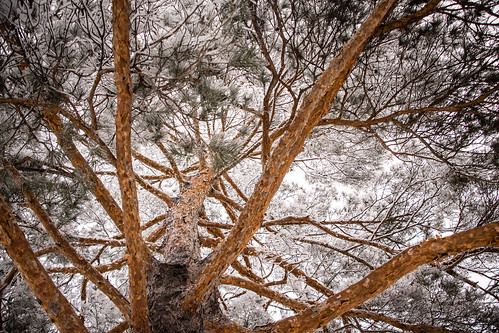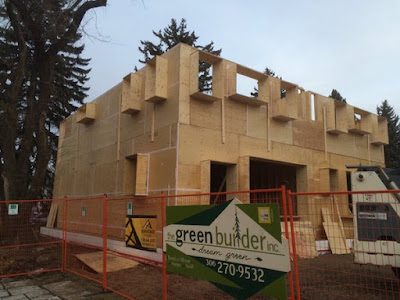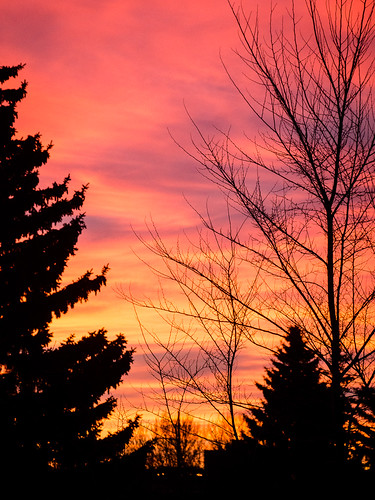With 71 buildings. the
Saskatoon Health Region is always on the lookout for ways to reduce utility costs and save energy without using patient dollars. Brian Berzola, Director, Facilities Management, and Doug Archibald, Manager, Energy Services, shared some of their triumphs and challenges.
Energy Performance Contract
The Saskatoon Health Region (SHR) has just completed Phase I of an energy performance contract with Johnson Controls. Johnson Controls worked with Health Region employees to identify energy saving projects at Royal University Hospital that were guaranteed to save money. This guarantee from Johnson Controls permitted SHR to borrow the money needed to complete the projects and they’ll use the savings to pay back the loan.
The contract covers projects that will have a payback (total investment divided by annual savings) in 15 years or less.
Occupancy Controls
Royal University Hospital is an older hospital. Large fans maintained a 24-hour air flow exchange, even in areas that were only used 8 hours a day, and consumed large amounts of energy. SHR has now installed electronic occupancy controls to ensure that the fans are shut off if the area isn’t in use on evenings and weekends.
Lighting
Lighting throughout the hospital was reviewed and replaced with more energy-efficient lighting, either LED or T8 fluorescent light fixtures with electronic ballasts. LED lighting was chosen for exterior sites as well as hallways and public areas, while T8s were used in patient rooms that require a softer light.
When putting together an energy performance contract, the goal is to put together a package that not only pays off your investment but also leaves you with a surplus that can be put towards projects that you couldn’t otherwise afford.
The Health Region applied some of the surplus dollars to install full spectrum LED lights in the Mall. “We wanted to remove the doom and gloom and give more of a daylight experience,” Brian Berzola explains.
Insulation
Royal University Hospital is heated by steam purchased from the University of Saskatchewan. It comes across in huge pipes that can lose a lot of heat in transit. Jackets have now been installed to insulate the pipes and prevent heat loss.
Weatherstripping was also used to insulate doors and windows throughout RUH.
Steam Traps
Steam travels from the University to RUH and the condensate then makes the return journey to be reheated and reused. Steam traps capture the latent heat before the water is sent back. If they’re not tight, heat is lost. 100 steam traps were replaced and the Health Region anticipates a payback in just a couple of years.
“By replacing the steam traps, we reduce the amount of heat that we have to purchase and we reduce the need to cool the rooms where the steam was escaping,” Doug Archibald explains.
Water
Low-flow toilets were installed throughout Royal University Hospital.
Additional Sustainability Projects
The Health Region is looking at additional environmental sustainability projects which are outside the parameters of the energy performance contract.
Parking & Transportation
Parking is hugely expensive to build and maintain. It’s also extremely complex. “We’re constantly trying to identify the right quantity of parking and to find the right balance between parking that is close to where people work (e.g. for night staff or a doctor delivering a baby) and further away for office staff who only work Monday to Friday. It’s also important to provide adequate handicapped parking.
The Health Region is working with the City of Saskatoon to identify other possibilities, such as park and ride or special buses that stop at the door of the hospital. “We’re always looking for ways to reduce congestion and demand on our parking lots,” Brian says.
Waste & Recycling
Medical facilities face a particular challenge when attempting to recycle and reduce waste.
The Health Region has a small recycling program for some plastics, cardboard and paper, and batteries, and they’re interested in expanding the program to incorporate other items.
The biggest problem is medical waste as it has proven to be extremely difficult to ensure that medical waste is completely separated from other garbage or recycling. Medical waste is sent to
Biomed Recovery & Disposal in Aberdeen for processing. They do their best to sterilize everything, but some material has to be incinerated.
Because it’s so hard to guarantee full separation, contractors are forced to immediately bury every load of waste that is removed from the Health Region.
Disposables vs. Reusables
There is an ongoing debate regarding the use of disposable versus reusable items. Reusable items may, at first glance, appear to offer an energy savings; however, that isn’t always the case. Heating and sterilizing equipment uses a lot of energy, equipment, and people and poses an additional liability risk. Similarly, with a central laundry in Regina, the energy consumed in transportation must be factored in when considering cloth versus disposable paper gowns.
Chemicals & Infection Control
Infection control is of ongoing concern, and the Health Region currently uses quite a number of harsh cleaning chemicals to attempt to prevent the spread of disease.
Brian Berzola is examining the potential of using UV lights to sterilize patient rooms and washrooms. Here are a few of the options:
Patient Washrooms: A UV light can be installed over washroom doors with a motion sensor that is only turned on when the door is closed and no one is in the room. Once activated, it disinfects the whole room.
UV Light Stands: British Columbia is using portable UV light stands with 8 bulbs to sterilize patient rooms. Stands are set up in empty rooms and placed so that there are no shadows and every surface is exposed to direct light (even drawers are opened). Once they’re set up, you walk out of the room and turn on the lights by remote control. The room is completely sterilized. “It’s not cheap,’ Brian says. “Each sets of tubes costs approximately $100,000. In addition, the room must be empty, and we rarely have empty rooms.”
UV Light Scrubbers: UV light scrubbers can be mounted on the ceiling, directly above a patient’s bed. Fans draw the air up, and it travels through chambers where it is scrubbed clean before being put back into the room.
The Health Region is also investigating a long-lasting anti-microbial finish that can be applied to high-touch areas, such as tables and doorknobs. “It’s like Teflon,” Doug says. “Germs just slide off and are killed.”
Looking Ahead
Brian and Doug emphasize that they work very hard not to divert dollars intended for patient care to energy projects. However, in the long run, energy savings and infrastructure improvements will lead to a safer, more comfortable patient experience.
Let’s hope that the
Saskatoon Health Region continues its search for ways to reduce energy consumption.
Additional Information
Energy Performance Contracting Guide, Natural Resources Canada
Ultraviolet Light Could Be Enlisted in Battle Against Hospital Infections
Photo Credit: Saskatoon Health Region















